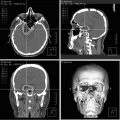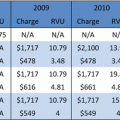Continent
Country
Units
Africa
Egypt
2
Morocco
1
Australia
Australia
1
Asia
China
16
India
7
Indonesia
1
Iran
1
Korea
15
Japan
48
Jordan
1
Pakistan
1
Philippines
1
Singapore
1
Taiwan
7
Thailand
1
Vietnam
1
Europe
Austria
2
Belgium
1
Croatia
1
Czech Rep.
1
France
3
Germany
4
Greece
1
Italy
5
Netherlands
1
Norway
1
Poland
1
Portugal
1
Romania
1
Russia
2
Spain
1
Sweden
1
Switzerland
1
Turkey
5
UK
5
South America
Argentina
1
Brazil
2
Chile
1
Columbia
2
Venezuela
1
North America
Canada
3
Dominican Rep.
1
Mexico
2
USA
111
Puerto Rico
2
Total
269
Category | Indication | Total |
|---|---|---|
Malignant tumors | Chondrosarcoma | 957 |
Nasopharyngeal carcinoma | 1,770 | |
Other malignant tumor | 10,400 | |
Malignant glial tumor (grade III and IV) | 30,874 | |
Metastatic tumor | 252,372 | |
Total | 296,373 | |
Benign tumors | Hemangiopericytoma | 1,533 |
Glomus tumor | 2,335 | |
Chordoma | 2,395 | |
Other schwannoma | 2,645 | |
Hemangioblastoma | 2,652 | |
Trigeminal schwannoma | 4,139 | |
Pineal region tumor | 4,420 | |
Craniopharyngioma | 5,107 | |
Benign glial tumors (grade I and II) | 5,990 | |
Other benign tumor | 6,865 | |
Pituitary adenoma (nonsecreting) | 19,575 | |
Pituitary adenoma (secreting) | 31,226 | |
Vestibular schwannoma | 63,797 | |
Meningioma | 90,761 | |
Total | 243,440 | |
Vascular disorders | Aneurysm | 348 |
Other vascular disorder | 5,325 | |
Cavernous angiomas | 6,128 | |
AVM | 71,566 | |
Total | 83,367 | |
Functional disorders | OCD | 193 |
Intractable pain | 707 | |
Other functional disorders | 1,444 | |
Parkinson’s disease | 1,715 | |
Epilepsy | 2,731 | |
Trigeminal neuralgia | 43,402 | |
Total | 50,192 | |
Ocular disorders | Other ocular disorders | 238 |
Glaucoma | 314 | |
Uveal melanoma | 2,084 | |
Total | 2,636 | |
Total | 676,008 |
The Evolution of Gamma Knife: Models A, B, C, and PERFEXION
The Gamma Knife has evolved steadily since 1967. In the first models (model U or A), 201 cobalt sources were arranged in a hemispherical array. These units presented challenging 60Co loading and reloading issues. To eliminate this problem, the unit was redesigned so that sources were arranged in a circular (O-ring) configuration (models B, C, and 4C) (Fig. 8.1).


Fig. 8.1
Schematic diagram of model 4C Gamma Knife unit (Courtesy of Elekta AB, Stockholm, Sweden.)
Gamma Knife radiosurgery usually involves multiple isocenters of different beam diameters to achieve a treatment plan that conforms to the irregular three-dimensional volumes of most lesions. The total number of isocenters may vary depending upon the size, shape, and location of the target. Each isocenter has a set of three x, y, z stereotactic coordinates corresponding with its location in three-dimensional space as defined using a rigidly fixed skull stereotactic frame. In terms of actual dose delivery, this means several changes in the patient’s head position within the helmet. In 1999, the model C Gamma Knife was introduced. The first model C in the USA was installed at the University of Pittsburgh Medical Center in March 2000. This technology combined advances in dose planning with robotic engineering and uses a submillimeter accuracy automatic positioning system (APS) (Fig. 8.2). This technology obviates the need to manually adjust each set of coordinates in a multiple isocenter plan. The robotic positioning system moves the patient’s head to the target coordinates defined in the treatment plan. The robot eliminates the time spent removing the patient from the helmet, setting the new coordinates for each isocenter, and repositioning the patient in the helmet. This has significantly reduced the total time spent to complete the treatment and also increases accuracy and safety [8–13]. Because the treatment time is shortened, a precise three-dimensional (3D) plan can be generated using multiple smaller beams achieving volumetric conformality. Such an approach results in a steeper dose fall-off extending beyond the target (higher selectivity). The other features of the model C unit include an integral helmet changer, dedicated helmet installation trolleys, and color-coded collimators. In 2005, the fourth-generation Leksell Gamma Knife, model 4-C, was introduced (Fig. 8.3). The first unit was installed at the University of Pittsburgh in January 2005. The model 4-C is equipped with enhancements designed to improve workflow, increase accuracy, and provide integrated imaging capabilities. The integrated imaging, powered by Leksell GammaPlan, offers the ability to fuse images from multiple sources. The planning information can be viewed on both sides of the treatment couch. The helmet changer and robotic APS are faster and reduce total treatment time.


Fig. 8.2
Gamma Knife 4C automatic positioning system, docking and 4 mm collimator (Courtesy of the University of Pittsburgh Gamma Knife Facility, 2013.)










